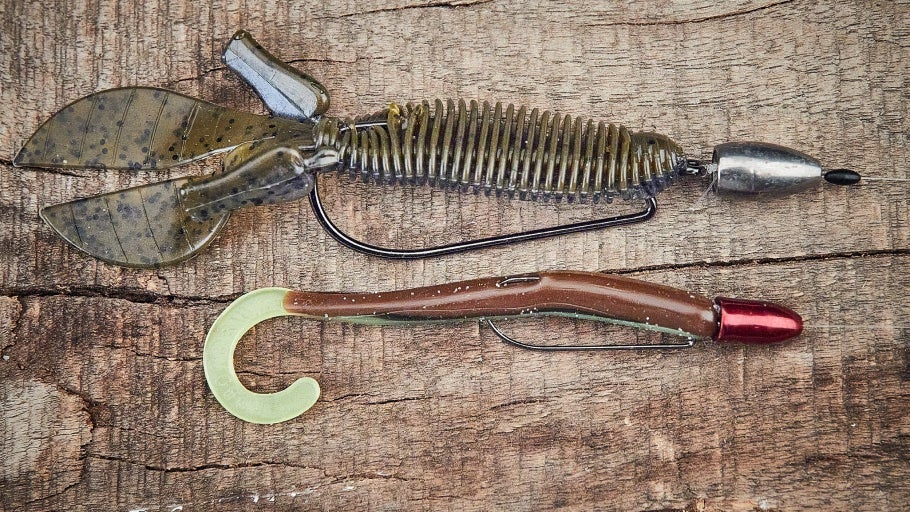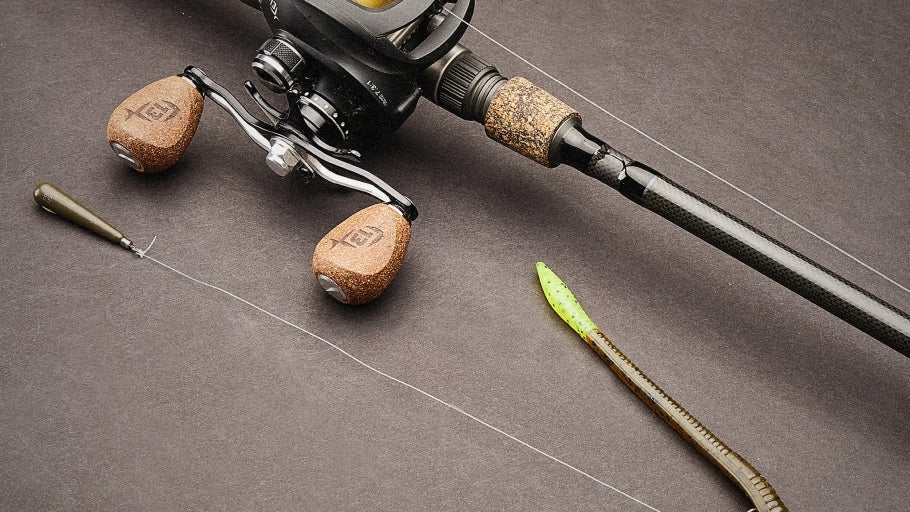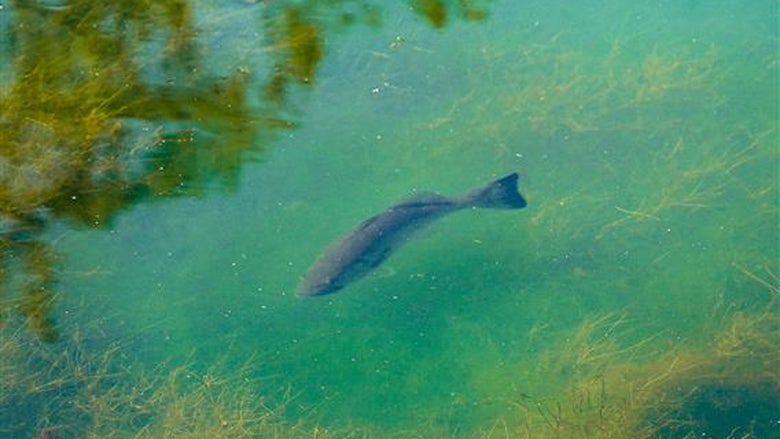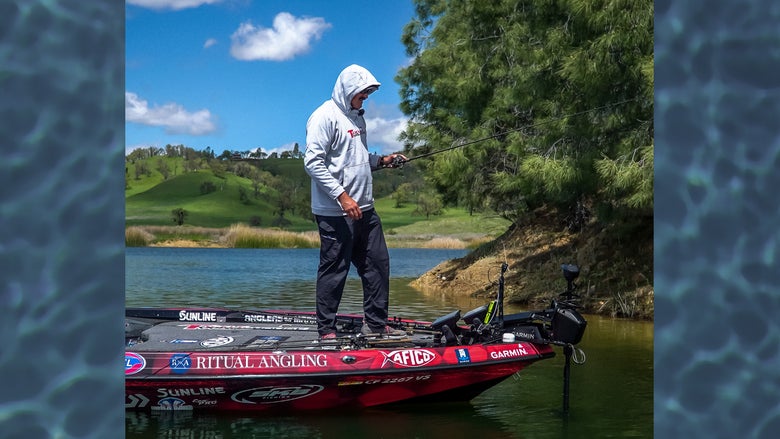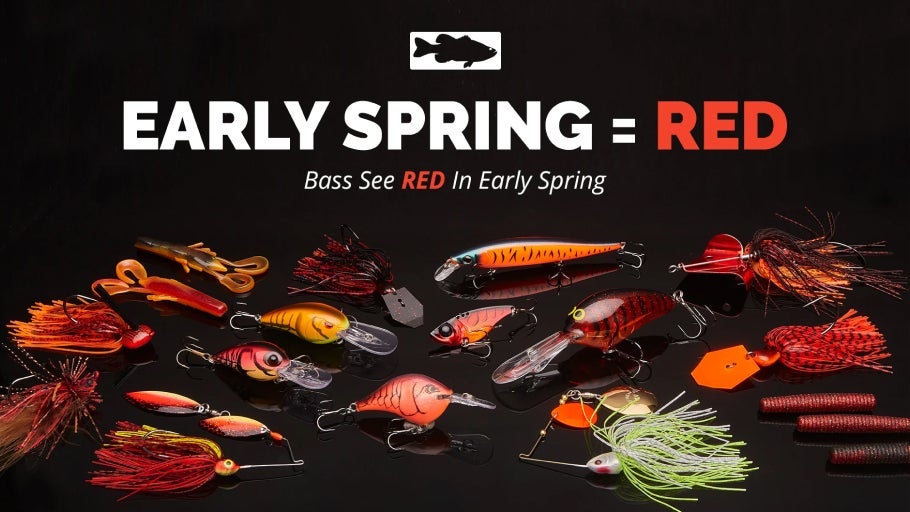
Spawn Bed Fishing Patterns & Techniques
Watching a fish eat or interact with your lure can be one of the most exciting ways to fish, and the Spawn offers the best window of opportunity for sight fishing as bass move into shallow water to make their beds. Understanding the different stages of the spawn will make you a better angler, and help you be more successful during the spring months, so here are a few things to consider when targeting bed fish.
Tackle Warehouse's Top Baits for Bed Fishing
Covering a broad spectrum from finesse, to almost comically oversized, bed fishing baits are aimed at one thing only – getting fish to react! Sometimes you have to experiment to get fish to react, but once you find something that works it can be lightning in a bottle. This is also one of the reasons why bed fishing baits are among some of the most closely-guarded secrets among tournament anglers. Below, you will find some of the most effective baits that we have used at Tackle Warehouse for enticing fish on beds. Give them a try for yourself, but shhhh!!!! don't tell anyone.
Where to look for beds?
Leave no stones unturned when you are looking for bed fish. Bass will bed shallow, deep, behind, and underneath almost anything you can think of, so keep your eyes peeled and look for anything that disagrees with the background. Hard bottom is what fish typically look for to make their bed, so focus your search in protected areas with gravel or sand bottoms. The shallowest most protected backwaters normally will see the first waves of fish because the water is warmer, however in high-pressure lakes fish will look to spawn at deeper and deeper depths. Target flats with brush pockets off the main lake, big boulders, man-made structures, shallow coves close to river and creek channels, gravel banks, logs, tires, and even trash or beer cans.
How to spot and find beds?
Position your boat so that you don’t cast a shadow along the bank. If your boat is casting a shadow, it will be harder to see the fish, and more importantly you may end up alerting them of your presence. When you’re looking for beds and fish, you’re not always going to spot them in their entirety. Some of the best sight fishing angler’s say they are often not looking for whole fish when sight fishing, but rather something small, like the outline of a tail, subtle fin movement or gill flare, a dark or light spot that might be a bed, or any irregularities in bottom composition. Those little tells will often clue you in on where bass are bedding.
Use polarized sunglasses, so you can see deeper into the water, and adjust the color of your lenses depending on the brightness of the sun. In low light conditions, an amber or yellow lens can help brighten things up, and on those bright, bluebird days, try a grey or blue colored lenses to protect your eyes from the high sun.
Approach once you have located fish?
Be stealthy. Some big fish spawning in shallow water are very spooky. Some fish will be so locked on a bed that you can come right up on them, but in most cases you want to do everything you can to avoid alerting the fish of your presence. Your goal is to stay as far away as you can while still being able to sight fish and watch how they react to your bait. Try to gauge the attitude of the fish, as you can usually tell right away if they are interested or want to eat.
Cast a variety of baits at their bed and see how they react to them. Are they interested in what you have to offer? Look for a sweet spot on the bed. Often there will be a particular area of the bed that triggers a better reaction, and it can be as simple as making repeated casts to the same spot. Some fish are so spooky you will not be able to get close enough to see them without spooking them. In this case, it is best to mark the location of the bed so you can move outside of sight range to fish them.
Male vs. Female. What to do once you have located fish?
When you come across a bed with a male and female, generally the smaller, more aggressive fish are the males protecting the nest, and the larger, more wary fish are females. Opinions will vary from angler to angler, and it can be hard to target just one when both fish are locked closely to a bed, but you usually want to keep the male on the bed for as long as possible. Hooking the male can often scare off the female, but at some point you may have to take your chances.
If you do end up catching the male on the bed, keep them in your livewell if you are permitted. Releasing the male back on to the bed can disturb the female and may cause both of the fish to lose interest. Even if the female leaves, you can always come back later in the day to see if she has returned, or is more inclined to stay on the bed or bite without the male.
Best Baits/ Techniques for bed fishing?
Keep a variety of your favorite baits ready to go, if you come across a seasoned fish, you may need to show them a number of different lures before you find one they want to eat. Start with something basic like a Texas-rigged creature bait rigged with a heavy inline hook, paired with a Medium Heavy to Heavy action rod, and a casting reel that can hold 15-20lb test. If they are inclined to bite your first presentation, you want to use the tackle that gives you the highest chance of hooking and landing the fish.
If they are not impressed with your first presentation, try using a finesse approach. A drop shot, ned rig, or jig with a small trailer will provide a scaled down profile that they might find more interesting. When they won’t bite your first and second offering, sometimes a large top hook swimbait or an oversized tube can get them fired up.
Every bed fish has its own personality, so it’s hard to argue that a particular bait or technique is best for bed fishing. Keep an open mind and be ready to throw a wide variety of lures. A Texas Rig, Drop Shot, Swim Jig, Casting Jig, Ned Rig, Swimbait, or Tube might be the answer.
Blind bed fishing approach, baits?
There may be times during the Spring when you know fish are spawning, but the water clarity or wind conditions do not allow for sight fishing. You can still target bed fish by concentrating your efforts on likely or known spawning areas by fishing slowly and making methodical casts to individual targets. At times blind bed fishing can be very productive, as the fish are less likely to get spooked by the sight of you or your boat. Try using slower moving presentations or baits that can be worked in place for blind bed fishing, like a Drop Shot, Weightless Wacky Worm, Texas Rig or Casting Jig.
Bed Fishing Tips & Tricks
- Upsize all of your tackle and gear when bed fishing. When faced with the close quarters combat of sight fishing large bed fish, your chances of breaking off dramatically increase.
- Take note of where you find bass spawning, as you can typically find them on beds in the same spots the following year.
- Keep an eye on the moon phase and sustained water temps of 60 degrees or greater. Bass will spawn in waves, so some days you might not see a single bed fish in a particular area. But with the right moon, weather, and water temperature you could find 20 or 30 on beds the very next day.
- When you know the fish are bedding but are having trouble locating beds, a flashy glide bait or wake bait will draw followers and help reveal their location.
- Bass and bluegill will often spawn in the same areas, so if you spot bluegill beds or shallow cruising bass spend some time fishing near them.
- Position the boat so you can cast past the bed and slowly drag it through without snagging cover.
- If you are really shallow, try casting your bait on the bank and slowly drag it into the water.
- Wear light colored clothes that blend in with the sky, whether its blue-bird or overcast. Bright-colored clothes may make it easier for fish to detect you from far away.
Bed Fishing Mistakes to Avoid
- One of the biggest mistakes that anglers make when bed fishing is trying to get so close to the bed that you can see every little thing that happens. As much as it can be entertaining to watch the fish interact with your bait, you may have to back way up to let the fish calm down before they become willing to bite.
- Try not to cast right on the bed of a fish or get too close with the trolling motor as you may spook them. Stay back and avoid using the trolling motor when it is directed at the bed.
- Some will get discouraged when the wind starts to blow, but that same chop that makes it difficult to see the fish will also provide some camouflage that should help them feel more comfortable.
- Don’t forget to return and check on a large fish that swam away when you started fishing for her. Often times if you give them a few hours, they’ll return and you can try to fish for them again.
- Avoid using underpowered tackle. Sometimes they may only eat your finesse baits, but you will want to use the heaviest line and tackle you can get away with when wrangling large fish at close range.
- Know when to call it quits. If you are fishing a tournament, don’t waste your time with bass that are rolling around on a bed. This is a courting method and in this stage most bass could care less about your bait.
- If you know you are going to be sight fishing on a particular day, make sure your bed fishing rod is ready so when you come across a bed you are ready to reach for it.
***It is very important to practice proper fish care at all times when handling fish, especially when bass are spawning. Snagging bed fish is illegal, unsporting, and you are not permitted to weigh in fish that have been hooked anywhere other than in the mouth during a tournament. Avoid putting bed fish in your livewell. Instead take a quick picture and release them back to their bed, so they can continue to protect their eggs and fully reproduce.***
Related Articles

